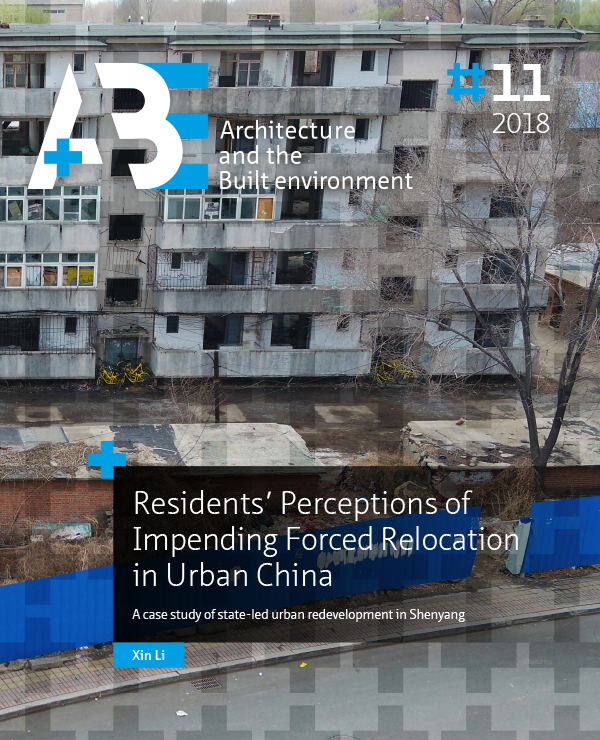Conclusions
DOI:
https://doi.org/10.7480/abe.2018.11.3568Abstract
Large-scale urban redevelopment in China has been taking place for decades since the market transitions from 1978, which have caused massive forced relocation of residents (He and Wu, 2007; MOHURD, 2013). This thesis has provided a comprehensive study on relocatees’ perceptions and experiences at the pre-demolition phase of the forced relocation and state-led urban redevelopment. Through an extensive overview of existing literature on the experiences of the affected residents and in-depth interviews with residents and other stakeholders in urban redevelopment, the thesis shows that current studies have largely ignored the temporal feature and dynamics embedded in urban redevelopment and forced relocation in the Chinese context. Also, the ambivalence of relocatees’ perceptions towards their lived experiences in their neighbourhoods is not fully addressed. Many studies and news reports have merely displayed the conflicting interactions between the residents and project initiators such as local governments or developers, and have considered the redevelopment projects as if they were a static event (He, 2012; Hin and Xin, 2011; Sichuan News, 2009). This conceals the mechanisms and complexity underlying the controversial and conflicting nature of forced relocation in the context of urban redevelopment.
Driven by these concerns, we especially focus on individual relocatees’ perceptions, experiences, and behaviours towards impending forced relocation and urban redevelopment. We highlight the ambivalence in the interactions between residents and neighbourhoods (people-place) as well as residents, local governments and developers, from a residential mobility perspective. Our research therefore aims to gain a deeper understanding of how forced relocation and urban redevelopment affect residents of declining neighbourhoods in Shenyang, in terms of their pre-relocation neighbourhood perceptions and behaviours.
This thesis is organized as followed. Chapter 1 is the introduction, which focuses on the research background, research aim and questions, research data and methods, and the history of urban (re)development of Shenyang. Chapter 2 provides a literature review on the experiences of residents, particularly the homeowners, during forced relocation in the Chinese context. This chapter is also the theoretical basis for the thesis, by identifying gaps in existing research and outlining the research questions for the following chapters. Chapter 3, 4 and 5 focus on the influence of Shantytown Redevelopment Programmes (SRPs) on the various dimensions of the perceptions and experiences of residents from declining neighbourhoods that are involved in the SRPs in the city of Shenyang. Chapter 3 investigates the evolution of the SRPs, related policies and the changing roles and interactions between the different stakeholders involved in SRPs, against changing macro-, social, economic and institutional contexts. Chapter 4 and 5 put the spotlight on individual residents’ experiences by specifically focusing on the people-place interactions with regard to place attachment and the ageing in place of older people. These two chapters also reveal the influence of the impending SRPs and impending forced relocation on the people-place interaction. The following section firstly summarizes the key findings of each chapter. A reflection on the research is presented in section 6.3. The last section outlines future directions for research and the policy implications.

